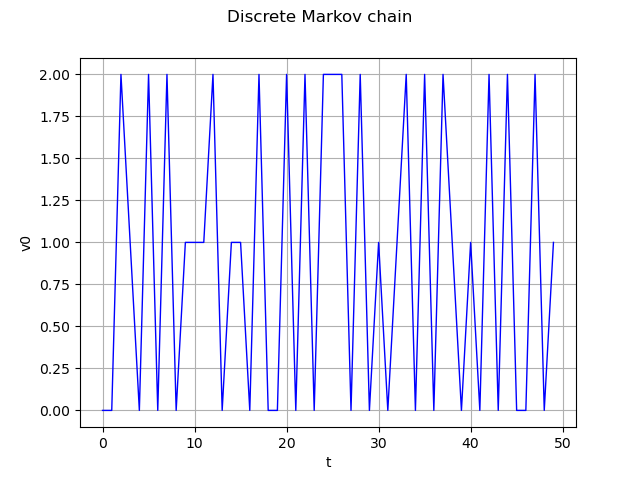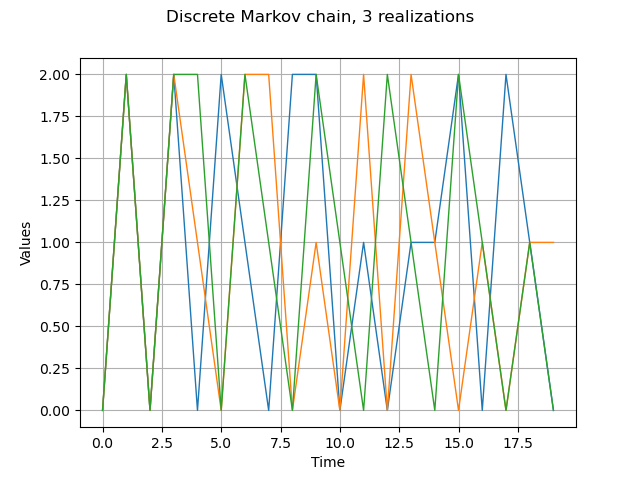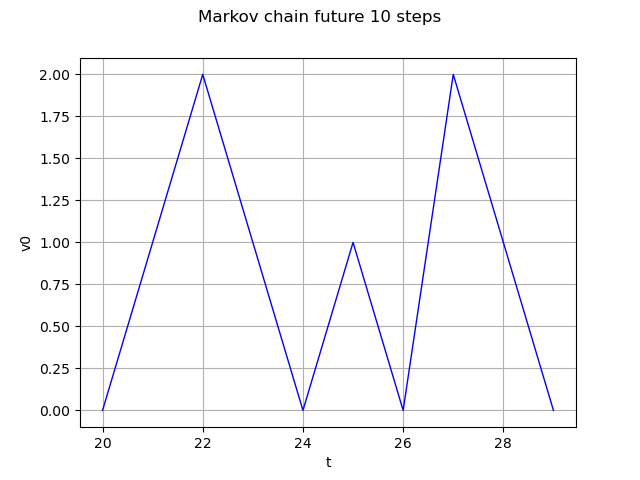Note
Click here to download the full example code
Create a discrete Markov chain process¶
This example details first how to create and manipulate a discrete Markov chain.
A discrete Markov chain , where
is a process
where
discretized on the time grid
such
that:
The transition matrix of the process can be defined such that:
The library proposes to model it through the object DiscreteMarkovChain defined thanks to the origin (which can be either deterministic or uncertain), the transition matrix
and the time grid.
import openturns as ot
import openturns.viewer as viewer
from matplotlib import pylab as plt
ot.Log.Show(ot.Log.NONE)
Define the origin
origin = ot.Dirac(0.0)
Define the transition matrix
transition = ot.SquareMatrix(
[[0.1, 0.3, 0.6], [0.7, 0.1, 0.2], [0.5, 0.3, 0.2]])
Define an 1-d mesh
tgrid = ot.RegularGrid(0.0, 1.0, 50)
Markov chain definition and realization
process = ot.DiscreteMarkovChain(origin, transition, tgrid)
real = process.getRealization()
graph = real.drawMarginal(0)
graph.setTitle('Discrete Markov chain')
view = viewer.View(graph)

Get several realizations
process.setTimeGrid(ot.RegularGrid(0.0, 1.0, 20))
reals = process.getSample(3)
graph = reals.drawMarginal(0)
graph.setTitle('Discrete Markov chain, 3 realizations')
view = viewer.View(graph)

Markov chain future 10 steps
future = process.getFuture(10)
graph = future.drawMarginal(0)
graph.setTitle('Markov chain future 10 steps')
view = viewer.View(graph)

Markov chain 3 different futures
futures = process.getFuture(10, 3)
graph = futures.drawMarginal(0)
graph.setTitle('Three Markov chain futures, 10 steps')
view = viewer.View(graph)
plt.show()

Total running time of the script: ( 0 minutes 0.275 seconds)
 OpenTURNS
OpenTURNS